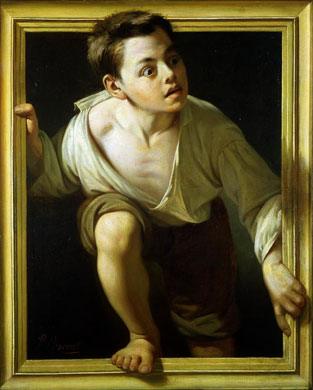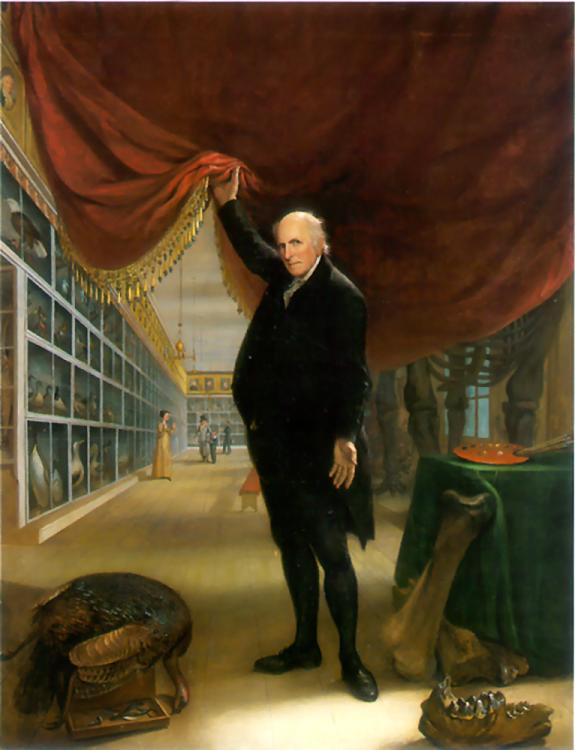 |
| Escaping Criticism by Pere Borrell del Caso Bank of Spain Headquarters - Oil on Canvass |
Breaking the Canvas: An Analytical Look at Pere Borrell del Caso’s "Escaping Criticism"
When we stand in front of a painting, our mind starts to interact with what is in front of us. We don’t just see the painting—we feel something about it. The angle from which we look at it, the light, the setting—all become part of what is called the viewpoint. From this viewpoint, a painting may appear flat or deep, simple or complex, depending on how it is constructed. Most paintings are done on flat, two-dimensional surfaces like canvas or board. Yet, great painters make us forget this flatness. They trick our eyes into thinking that we are looking into a space that has depth, distance, and dimension. This visual trick is called perspective, and mastering it is one of the most powerful tools an artist can use.
Nowhere is this technique more dramatically and impressively demonstrated than in Pere Borrell del Caso’s “Escaping Criticism” (1874). This painting has captured the attention of art lovers and critics alike for decades. At first glance, it shocks the viewer. A young boy seems to be climbing out of a wooden frame, half of his body already escaping from the painting. The frame itself looks realistic—as if the boy has physically broken through it. It makes us question whether we are looking at art or reality. This clever illusion is the result of the artist’s strong command over perspective, shading, form, and geometry. Let’s look more deeply into how and why this painting continues to amaze us.
The Role of Perspective in Art
In visual art, perspective is the way an artist creates the illusion of depth on a flat surface. Through the use of vanishing points, converging lines, and size distortion, an artist can create the feeling of three-dimensional space. When the rules of perspective are used correctly, objects in a painting appear to recede into the background, just as they do in real life.
For instance, when we look down a straight road, it appears to narrow as it stretches into the distance, eventually meeting at a vanishing point on the horizon. This is the basic idea behind linear perspective. It was first formally introduced during the Renaissance, and since then, artists have used it to enhance realism in their work.
In “Escaping Criticism,” del Caso uses perspective to create an illusion so powerful that the painting seems to jump out of its own limits. The boy’s foot appears to rest outside the picture frame. His body emerges into the real world. The rest of his form remains inside the painted world. The wooden frame, painted so convincingly, becomes part of the illusion. This clever use of spatial perspective is what makes the painting both delightful and disorienting.
Pere Borrell del Caso: A Hidden Genius
Born in 1835 in the Catalonian town of Puigcerdà and later based in Barcelona, Pere Borrell del Caso was a Spanish painter, engraver, and illustrator. While he was respected during his time, he did not become a household name like some of his contemporaries. However, with “Escaping Criticism,” he created a masterpiece that brought his name to the forefront of discussions about illusion in art.
Del Caso’s painting stands out not only because of its visual trickery but because of the thought behind it. The idea of a young boy breaking out of a painting may have many interpretations. Is it about rebellion against the academic rules of art? Is it a comment on freedom? Or perhaps a satire on critics who try to limit creativity? Whatever the meaning, the technical execution is so excellent that it draws attention regardless of its deeper symbolism.
Creating the Illusion of Volume
When we talk about volume in a painting, we mean the visual suggestion that objects have weight, depth, and shape. On a flat canvas, this is not easy to achieve. The painter must create this effect through shading, highlights, perspective, and careful composition.
In “Escaping Criticism,” the boy’s face is modeled with soft shadows and highlights, giving the impression of a three-dimensional form. His shirt wrinkles naturally, his hair has texture, and his foot projects forward, catching the light. These details work together to create the illusion that the figure is real and not painted.
It’s important to remember: a canvas is flat. It has no actual space in it. All the space we perceive is an illusion. An artist must learn how to create the illusion of space using colors, tones, and lines. This is where experience, study, and imagination come together. Del Caso clearly had a deep understanding of geometry and light, and he applied that understanding with great skill.
The Balance of Imagination and Technique
There’s an old belief in art circles that about twenty percent of every good painting comes from the artist’s imagination. The rest—eighty percent—is solid technique. It’s the knowledge of how to use brushes, how to mix colors, how to create form, and most importantly, how to arrange objects on a canvas in a way that pleases the viewer.
A painting like “Escaping Criticism” is not created by accident. It demands careful planning. The artist needs to understand how the human eye moves over an image. He must decide where to direct the viewer’s gaze. He must build the illusion of three-dimensionality through the use of space, lines, and color.
Here’s the challenge: the artist stands before a blank canvas with brushes and paints. There is nothing there but emptiness. From that blank space, the artist must draw out an entire world—a believable one. This requires more than just talent. It requires mental discipline and the ability to visualize an entire scene before even touching the canvas.
 |
| Pere Borrell del Caso |
Using Canvas Space Artistically
What makes a painting pleasing to the eye? Often, it's how well the artist has organized the space. In other words, the layout and balance of the elements on the canvas. Humans are naturally drawn to certain visual patterns. Our eyes look for order and flow. A skilled painter understands this instinct and uses it to their advantage.
In del Caso’s painting, we see a strong sense of visual balance. The boy is placed centrally, but not stiffly. His movement toward the viewer breaks the stillness of the canvas. The painted frame sets a boundary, but the boy disrupts that boundary. This push and pull between freedom and containment makes the image dynamic and alive.
The artist has made excellent use of negative space—the empty areas around the subject—to highlight the sense of escape. He has also used contrasts: between light and shadow, movement and stillness, illusion and reality. These contrasts make the image more powerful and memorable.Edges and Depth: Creating Space Through Form
One of the simplest yet most important tools in creating the illusion of depth is the edge—the boundary where one object ends and another begins. These edges are where an artist can create a feeling of space. A hard edge might suggest something close to us, while a soft edge might make something look far away or fading into the background.
In this painting, the boy’s arm and foot are painted with sharper edges to make them stand out from the rest of the picture. The background, on the other hand, is softer and more subdued. This contrast helps the eye to separate foreground from background, which increases the illusion of depth.
The technique of graded shading also plays a big role here. Light does not fall equally on every surface. By darkening some areas and lightening others, the artist can mimic how light works in the real world. This gives the painting a feeling of realism.
The Genre: Trompe-l'œil (Deceive the Eye)
Del Caso’s painting belongs to a category of painting called “trompe-l'œil”, a French term meaning “to trick the eye.” This technique has been used by artists for centuries to create optical illusions. Walls that appear to have windows, ceilings that look like open skies, and paintings that seem to have real objects are all part of this genre.
What makes “Escaping Criticism” special within this genre is that it’s not just a technical exercise. It carries an idea. The boy is not just stepping out of the frame; he is symbolically rejecting confinement, perhaps even the confinement of artistic rules or societal judgment. It is clever, humorous, and thought-provoking.
Why This Painting Still Matters
“Escaping Criticism” is more than just an impressive trick. It is a thoughtful and carefully crafted work of art that uses every tool available to the painter’s hand—geometry, shading, color, composition, and storytelling. It pulls the viewer in with shock and wonder, and then holds their attention through detail and technique.
Pere Borrell del Caso may not be as famous as Goya or Velázquez, but in this painting, he achieved something very rare: a perfect fusion of artistic technique and emotional impact. He made us believe in something that isn’t real. And in doing so, he reminded us of what art can do—bend perception, provoke thought, and stir the imagination.
In the end, this painting is a celebration of the artist’s ability to transform a flat canvas into a living scene—something with volume, movement, and meaning. It is a work that continues to escape not only its frame but also the limitations of time and style. It remains alive, leaping toward us, just as the boy in the painting still tries to escape criticism.
 |
| Self Portrait Charles Willson Peale Philadelphia Museum of Art |